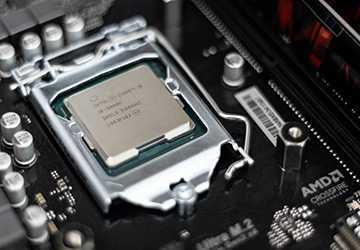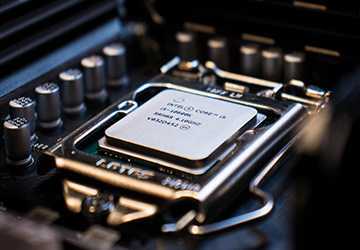How to Choose the Right Processor for Your Computing Needs?
Hyper-Threading and Simultaneous Multithreading: A Deep Dive
In addition to the number of cores and threads, it's essential to understand technologies like Hyper-Threading Technology for Intel processors and Simultaneous Multithreading Technology for AMD CPUs. These technologies allow each body to manage multiple wires, doubling multitasking capabilities. Suppose you're reading a CPU buying guide. In that case, this feature is handy for users who run multiple demanding applications simultaneously or perform tasks that require high computing power, such as machine learning or 3D design.

Balance between clock speed and core count
While clock speed and core count are important variables, the balance between the two often determines the actual performance of a CPU. Higher clock speeds are more beneficial for tasks that rely on single-core performance. In contrast, features that can take advantage of multiple cores benefit from a CPU with more cores, even if the clock speed is slightly lower. Therefore, understanding the primary purpose of your computer will help you decide how to choose a processor that can achieve this delicate balance.
Motherboard Chipsets: The Forgotten Component
While most people only focus on socket compatibility, the motherboard chipset also plays a vital role in the performance and functionality of your system. Some chipsets allow CPU overclocking, while others are more restrictive. Understanding the limitations and benefits of your motherboard's chipset can help you avoid future upgrade restrictions.
Integrated graphics: more than just an add-on
Integrated graphics have come a long way and can handle tasks like HD video streaming and light gaming. But remember: if you're a professional gamer or video editor, you'll still need a discrete graphics card for optimal performance. Still, a CPU with decent integrated graphics can be a good backup if something goes wrong with your external graphics card.
Power and Cooling Solutions: Sustainability Matters
While TDP values estimate heat dissipation, power consumption may vary depending on the task. Some CPUs have built-in power-saving features that can benefit those looking to build an energy-efficient setup. Additionally, the cooling solution you choose (whether air or liquid) must match the CPU's thermal capabilities.
Integrated graphics card and discrete graphics card support
When looking for pure computing power, the choice between integrated and discrete graphics is often overlooked and can have significant consequences depending on the application scenario. Integrated graphics are integrated into the CPU and provide sufficient performance for basic tasks such as surfing the Internet or editing documents. However, if you enjoy gaming, video editing, or other graphics-intensive activities, you must choose a CPU that supports discrete graphics. So, when looking at a CPU buying guide, remember to consider your graphics performance needs.
Thermal Design Power (TDP) and Cooling Solutions
Thermal design power (TDP) is a metric that indicates how much heat a CPU is expected to dissipate. If you are building a more minor, compact system, use a CPU with a lower TDP, which usually requires fewer cooling solutions. However, if you choose one of the best computer processors, you must be prepared to invest in a powerful cooling system to control those temperatures.

Overclocking capabilities: for enthusiasts
Some CPUs have overclocking features that boost the processor beyond its base clock speed. This feature is attractive to gamers and professionals who require top-notch performance. If you are still wondering how to choose a processor and you are the kind of person who likes to tweak and optimize, then consider a CPU explicitly designed for overclocking.
Understanding the Benchmark: Real-World Performance Metrics
While technical specifications are a good starting point, they sometimes only reflect actual performance. This is where benchmarks come into play. Websites and platforms specializing in hardware reviews often provide benchmark results for various tasks such as gaming, multitasking, and content creation. Rely on it to give you a more realistic idea of how your CPU will perform in the real world.
Lifespan and warranty: long-term considerations
When you invest in a CPU, you're not just buying a piece of hardware but making a long-term commitment. The CPU's warranty, customer support, and general longevity should also be considered. The best computer processors often come with comprehensive warranties and are built to last, giving you peace of mind.
Socket Compatibility: The Heart of the System
One often overlooked point when planning a computer build is socket compatibility between the motherboard and CPU. Make sure the processor you're considering for the best computer matches the motherboard socket type. A mismatch can result in incompatibilities and unnecessary costs. This is a crucial step in choosing a processor, but one that's often overlooked in favor of flashier features.
Multi-core performance vs. single-core performance
It's easy to think that more cores automatically means better performance. While multi-core CPUs are good at multitasking and running parallel processes, single-core performance is critical for tasks that cannot be distributed well across multiple cores, such as some legacy software and games. A balanced CPU with a solid performance in both areas is usually preferable to a CPU that excels in only one area.
Energy efficiency: more than just TDP
While TDP is the standard metric for understanding a CPU's heat output, power efficiency is a broader concept that can affect your electricity bill in the long run. Newer generations of CPUs are generally more energy efficient and require less power to achieve the same or better performance. This is an ecological and economic aspect that needs to be considered.
Software Optimization: Tailored to Your Needs
If you use Somee optimized for those applications. Companies that use specific software frequently, like Adobe and Autodesk, often work with hardware manufacturers to maximize CPU performance for their software.